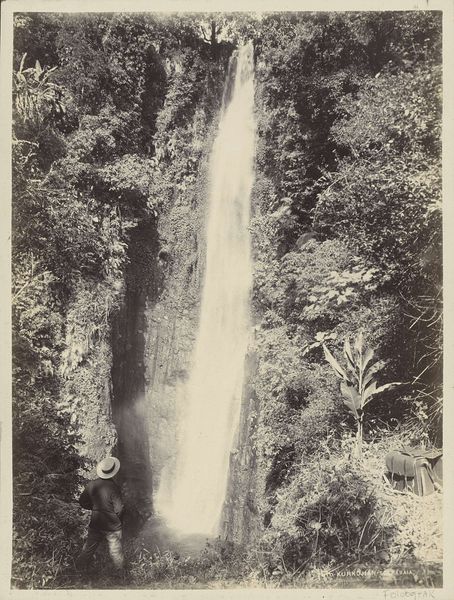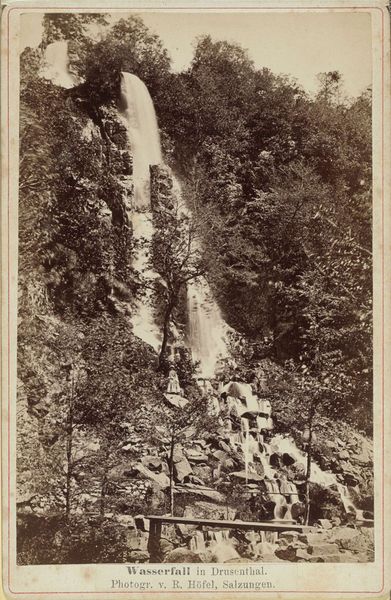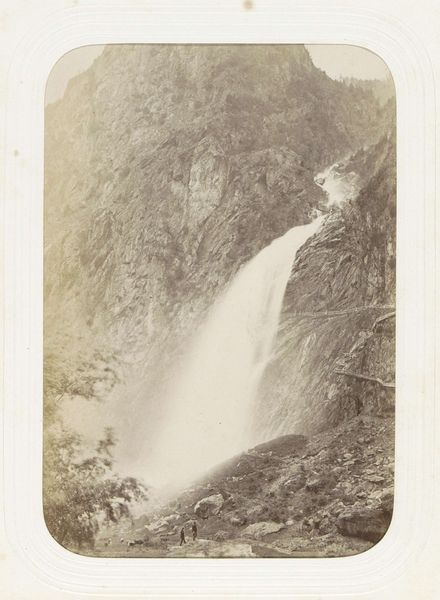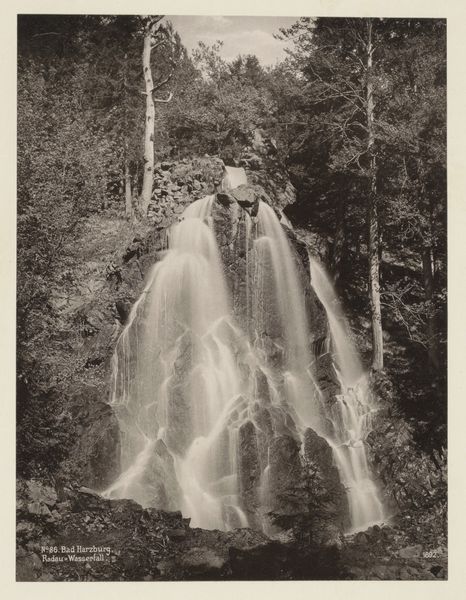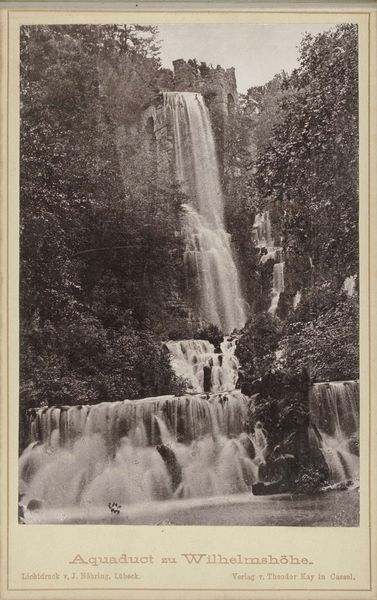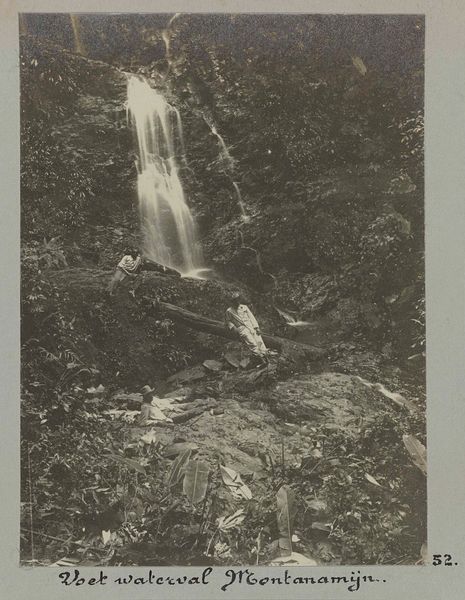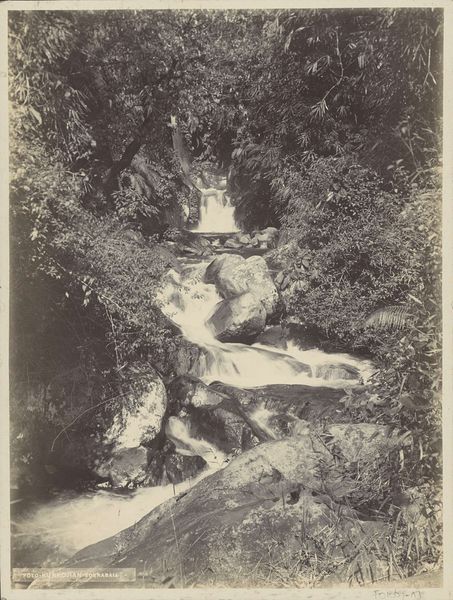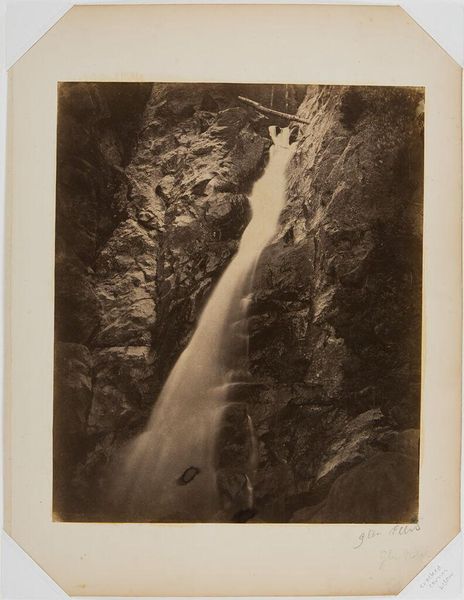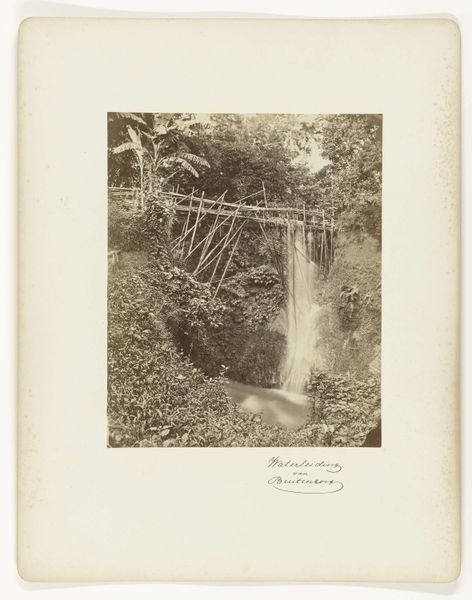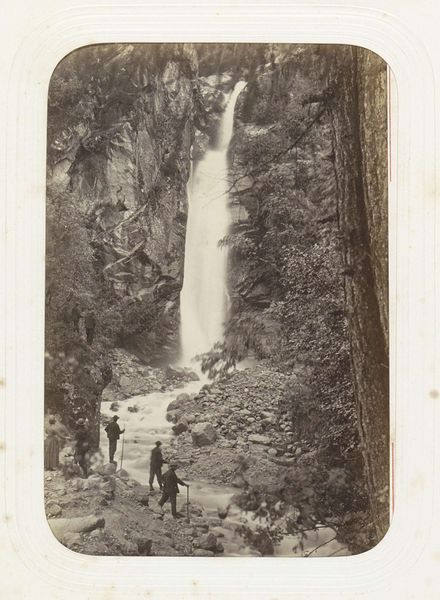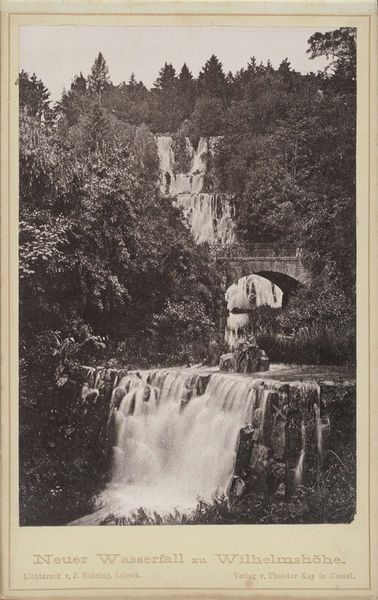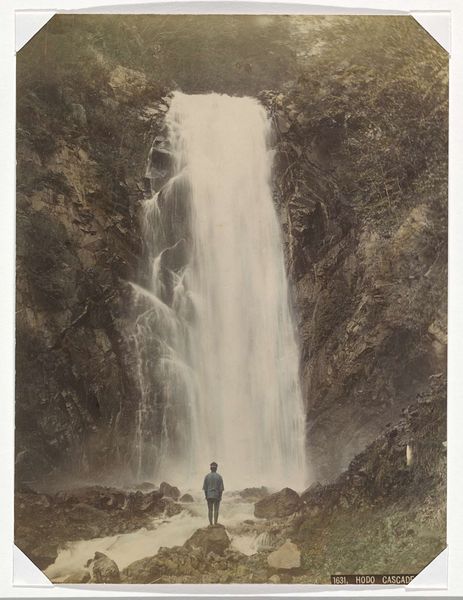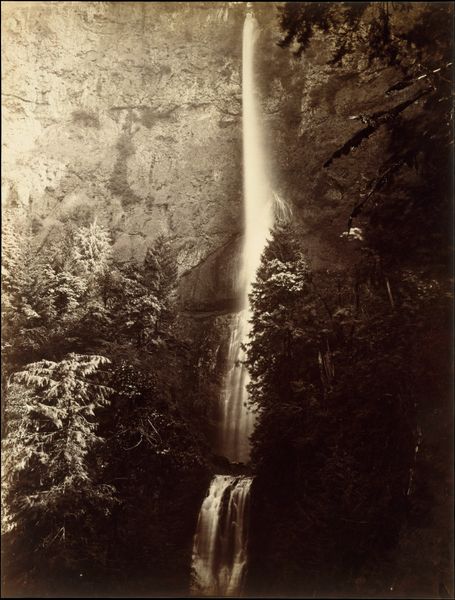
Portret van de families Kessler en Heyning onder aan een bergwaterval in de Harz c. 1903 - 1908
0:00
0:00
photography
#
portrait
#
pictorialism
#
landscape
#
photography
Dimensions: height 80 mm, width 110 mm, height 363 mm, width 268 mm
Copyright: Rijks Museum: Open Domain
Curator: Looking at this image, I’m immediately struck by the almost overwhelming grandeur of the natural setting, contrasted against a carefully posed group of people. Editor: Yes, "Portret van de families Kessler en Heyning onder aan een bergwaterval in de Harz," or Portrait of the Kessler and Heyning Families Beneath a Mountain Waterfall in the Harz, made sometime between 1903 and 1908. What we are seeing is a photograph from Geldolph Adriaan Kessler here at the Rijksmuseum. What's your impression of this? Curator: It's visually captivating! The waterfall becomes a symbolic torrent. Water is purification, renewal, but here, it's almost confrontational in scale. Then, you notice the families gathered below...what story are they trying to tell here? Editor: Interesting observation. Considering this photograph falls within the pictorialism movement, there is much attention given to aesthetic effect, almost blurring the lines between photography and painting. It evokes, in a way, the Romantic tradition – sublime nature juxtaposed with human figures to highlight both power and fragility. How do we interpret their attire and posture within this historical frame? Curator: It appears carefully constructed, everyone seems positioned to communicate status and serenity against such a wild backdrop. Are they masters of their domain, observers of raw power, or somehow attempting to claim the unclaimable? I’m sensing a real tension. The muted sepia tones enhance the impression that the photographer captured a poignant encounter with nature. It has that look that all of the people were standing in front of the backdrop for the portrait to be taken. Editor: Perhaps their presence is an assertion of bourgeois leisure; framing a kind of touristic possession, though one tempered by the sublime scale of nature. But consider the technology - photography offered an immediate medium for solidifying social memory in those circles. Curator: Right. It creates this odd juxtaposition where something like a spontaneous moment is preserved with intention, leaving clues about social identity, attitudes, and values of that time. Editor: Ultimately, I think this piece brings to mind both an impressive technical exercise and also tells an intimate, if somewhat staged, cultural narrative about class, identity and the gaze of the early twentieth century. Curator: It does, I’d agree. In its own way, this image acts as an intriguing meditation on society's evolving relationship with nature and the advent of photography.
Comments
No comments
Be the first to comment and join the conversation on the ultimate creative platform.
